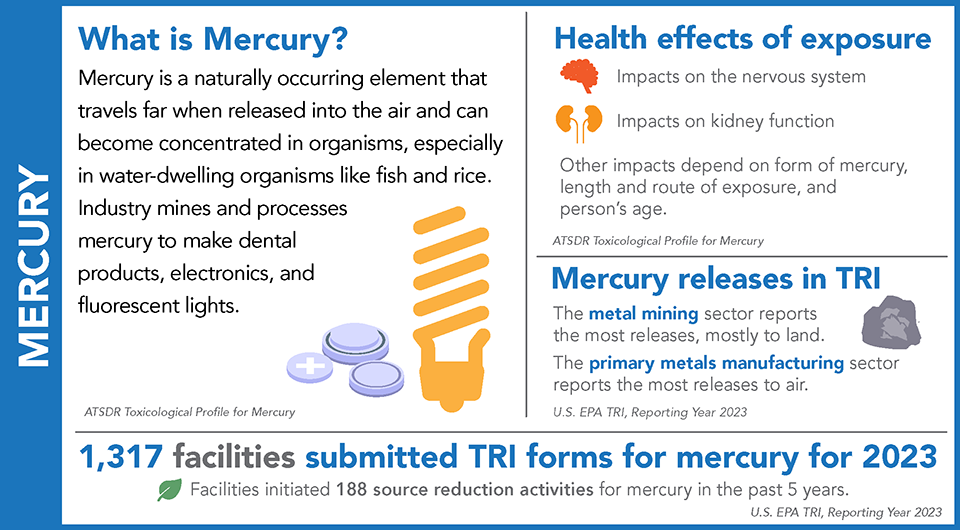Mercury
This chemical profile focuses on releases of mercury and mercury compounds.

Facilities report waste management of both mercury and mercury compounds to TRI. For TRI, “mercury” only includes elemental mercury, while “mercury compounds” includes mercury that is part of another chemical substance. Although facilities may report for mercury compounds separately from mercury, the two are combined and referred to simply as “mercury” in this analysis.
This profile focuses on air releases of mercury as they are the type of release most likely to impact human health.
This map shows the locations of the facilities that reported mercury to TRI for 2023. The dot size indicates relative release quantities to air. Click on a facility for more details on its reporting.
Click on any one of the locations on the map to see detailed information.
View Larger Map
This graph shows the 10-year trend in mercury released to air.
Visit EPA’s mercury homepage for more information about mercury and EPA’s actions to reduce mercury exposures.
Visit the Agency for Toxic Substances and Disease Registry’s ToxFAQs for mercury to learn more about the effects of mercury exposure and what you can do to prevent it.
From 2014 to 2023:
- Releases of mercury to air: 49 thousand pound decrease (-63%), largely driven by decreased stack emissions.
- A 38,000-pound reduction in mercury air emissions from electric utilities drove the decline. The decrease was driven by a shift from coal to other fuel sources (e.g., natural gas) and by the installation of pollution control technologies at coal-fired power plants.
- Note that only those electric utilities that burn coal or oil to generate power for distribution into commerce are covered under TRI reporting requirements. Electric utilities that do not burn coal or oil are not required to report to TRI.
From 2022 to 2023:
- Releases of mercury to air: 4,400 pound decrease (-13%).
- For 2023, the primary metals sector, which includes iron and steel manufacturers, accounted for 41% of the air emissions of mercury. The electric utilities sector accounted for 21% of mercury air emissions.
This page was published in August 2025 and uses the 2023 TRI National Analysis dataset made public in TRI Explorer in October 2024.
